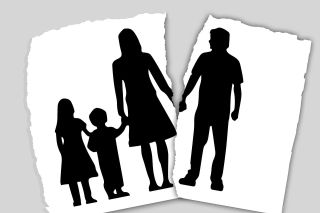Divorce
8 Reasons 50/50 Custody Arrangements May Not Work
The growing data on such pacts reveals drawbacks for children.
Posted July 20, 2023 Reviewed by Hara Estroff Marano
Key points
- Parental conflict may impact whether joint custody works well or not.
- Differences in parents’ style of attachment to children contribute to the inadequacy of 50/50 custody plans.
- Parental personality differences influence ability to give emotional nurturance to children.
- Courts often fail to alter 50/50 custody arrangements when circumstances beg for a change.
About half of first marriages end in divorce. People divorce for many reasons. Most of the reasons reveal a couple cannot get along and make decisions they can agree on and live with. Often couples have animosity for one another and cite ongoing interpersonal conflict and marital infidelity as reasons for divorcing.
Most U.S. states advocate for some type of joint custody arrangement for children after their parents’ divorce. Joint custody, with split living arrangements, works well for some children, finds Leslie Nielsen in a review of 40 studies. But, what about the children who do not fare well in joint custody? What happens that gets in the way of 50/50 custody working out? Here are eight factors.
Parental Conflict Over Childrearing
When parents are in conflict with one another before and during the divorce, they are in the same quagmire right when custody is being decided. Often, they are unable to agree on how to rear the children, logistically and emotionally, say Pires and Martins.

Exposure to Unequal Parenting Ability
Courts believe that parents are equal in ability to parent. This often is not the case. Martin and Adams discovered that parents who divorce may have dissimilar parenting abilities. One parent may be a better parent than the other, often significantly better, in meeting children’s needs. This is because parents who divorce have vastly different personalities that impact their parenting skills and the ways they attach with and care for their children.
Different Patterns in How Parents Interact with Children
One parent more than the other may have a history of emotionally caregiving to the children. This is not necessarily the parent who stays home with the children. This may be the parent who works 50 hours a week away from home. This is the parent who emotionally gives to the children, rather than emotionally taking from them, as occurs is role-reversal or parentified parents.
Mahrer et al. find that quality of parenting is extremely important in how children fare after divorce, even more important than the degree of parental conflict existing at the time. A higher quality of parenting, by even one parent, creates better psychological adjustment for children.
Unbuffered Solo Time with Parent Less Able to Meet Children’s Emotional Needs
Children spend solo time with each parent in joint custody arrangements. This means they have significant exposure to one parent who may not care as well for their physical and emotional needs. This is the parent who tends to lean emotionally on the children. Such exposure is arduous for children.
In such instances, the more emotionally-attuned parent is not around to buffer the unsupportive parent as was the case when the parents were married. Children may become psychologically symptomatic with anxiety, feeling overwhelmed and frustrated if meals are not forthcoming, if they arrive late to school and sports practices, or see laundry pile up and have no clean clothes to wear, report Pruett and Barker.
Fairness Is for Grownups, Not for Children
Fifty-fifty joint custody may represent “fairness,” but it doesn't necessarily convey that to children. Children may try diligently to be obedient and comply with the court order. What they know at young ages about “fairness” and “sharing” is giving the other person his way part of the time and getting your way part of the time. At some point children may recognize fifty-fifty joint custody does not work well for them psychologically. They may feel split in half. This sets the stage for self-devaluation and psychological symptoms. This may even lead to suicidal feelings, find Wallerstein et. al.
Children may feel guilt over wanting to live with their more emotionally caregiving parent and visiting the other. They may want to stop the disorganization and neglect they feel. Yet, they feel compelled to fit in with the desires of mom, dad, and the judge, says researcher Joan B. Kelly.
Courts Get Stuck in 50/50 Custody Arrangements
Courts become stuck in their original decisions and are reluctant to alter the 50/50 custody arrangement unless there is egregious abuse, neglect, or parental alienation by one of the parents. Even then, courts may still refuse to make changes to custody arrangements because they cannot identify the problem. The c onsequence may be emotionally disturbed children living half the time with one parent who fails to care for them adequately and/or who may be emotionally abusive or alienating.
Courts Lack Knowledge of Child Attachment and Parent-Child Relationships
Courts, especially judges, lack knowledge of parental personality dynamics and in dynamics between parents and children, especially parental attachment to their children and children's attachment to their parents. If they learned about such things, they might be more selective in making fifty-fifty custody determinations or altering them when children are not faring well emotionally.
Difficult Daily Logistics
In addition, the logistics of split custody arrangements may be difficult for parents and especially for children, says Leslie Nielsen. "Who do I go home with today?" "Where is my sports uniform?" "Whose turn is it to pick me up from practice?" Distances between households may mean three hour drives each way every few days.
Children live in two households but may feel they have no home. They may feel scattered and unmoored because of not having one place to call home. They may suffer with anxiety and depression as a result, Nielsen and many clinicians have found.
References
Kelly, J.B. (1993). Current research on children’s post-divorce adjustment––no simple answers, Family Court Review. Vol 31(1):29-49.
Mahrer, N.E. et. al (2018). Does shared parenting help or hurt children in high conflict divorced families? J Divorce Remarriage. 59(4): 324-347.
Martin, H.B. & Adams, C.B.L. (2018). Living on Automatic: How Emotional Conditioning Shapes Our Lives and Relationships. ABC-Clio, Santa Barbara, CA.
Nielsen, L. (2014). Shared physical custody: Summary of 40 studies on outcomes for children, J of Divorce & Remarriage, 55(8):613-635.
Pires, M. & Martins, M. (2021). Parenting styles, coparenting, and early child adjustment in separated families with child physical custody processes ongoing in family court, Children, 8(8): 629.
Pruett, M.K. & Barker, R. (2009). Children of divorce: New trends and ongoing dilemmas. In J. H. Bray & M. Stanton (Eds), The Wiley-Blackwell Handbook of Family Psychology, pp. 463-474.
Wallerstein, J.S. et.al (1996). Surviving the Breakup: How Children and Parents Cope with Divorce, Basic Books.




